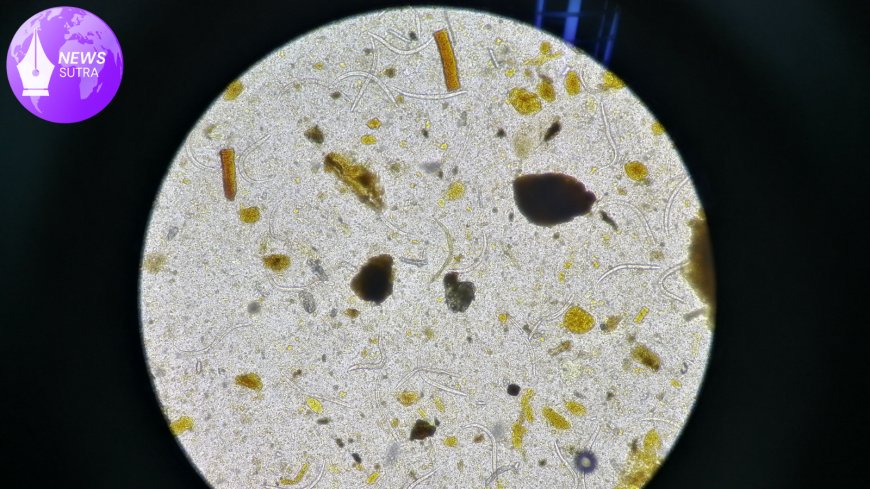Flesh-Eating Parasite Case Sparks Health Alerts Across the U.S.
The CDC confirms the first U.S. human case of New World screwworm, a flesh-eating parasite, raising climate-related health concerns and agricultural risks.

The U.S. Centers for Disease Control and Prevention (CDC) confirmed the nation’s first known case of a human infection caused by the New World screwworm, a flesh-eating parasite previously thought to be eradicated within American borders. The patient, a traveler recently returned from El Salvador, was diagnosed earlier this month, setting off nationwide health alerts and renewed concerns about how climate change and global travel are altering the spread of dangerous parasites.
What is the New World Screwworm?
The New World screwworm (Cochliomyia hominivorax) is a parasitic fly whose larvae feed on living tissue, burrowing into wounds and causing severe infections. Unlike other parasitic flies, screwworms are notorious for their aggressive tissue destruction, making them a critical veterinary and human health threat.
Though the U.S. successfully eliminated the screwworm in the 1960s through an extensive sterile insect release program, the recent case highlights the parasite’s ability to re-emerge under shifting ecological conditions.
How the Case Was Detected
The traveler sought medical treatment after returning to Texas with what initially appeared to be a persistent wound infection. Upon further investigation, doctors identified larvae consistent with New World screwworm, which were later confirmed through genetic analysis conducted by USDA labs. Immediate isolation and eradication procedures were put in place to prevent spread.
“This was a close call,” said a senior USDA scientist familiar with the case. “The larvae can multiply quickly and, if undetected, could establish new colonies. Our rapid response likely prevented a wider outbreak.”
Climate and Migration Patterns: A Growing Concern
According to unpublished insights from USDA researchers shared with NewsSutra, migration patterns of screwworm flies are shifting northward due to warmer winters across Central America. Data from ongoing field studies suggest that climate-driven ecological changes could open corridors for seasonal reintroductions into the southern U.S., particularly Texas and Florida.
An interactive comparison of migration models with historical eradication zones shows a troubling overlap between climate-driven warming belts and key livestock hubs. If the parasite establishes itself again, the economic consequences for U.S. agriculture could reach billions of dollars annually, particularly in cattle and sheep industries.
Expert Analysis: Public Health Risks
Health officials stress that while this is an isolated case, the potential for spread cannot be ignored. Dr. Laura Gomez, a parasitologist at Johns Hopkins University, noted:
“Human cases remain rare, but the parasite doesn’t discriminate between animals and people. With warmer climates and rising international travel, the conditions for reintroduction are more favorable now than at any point in the last 50 years.”
The CDC has issued precautionary guidelines for clinicians, urging them to be alert for unusual wound infections in patients returning from Central and South America.
Prevention and Public Awareness
Public health agencies are focusing on education, surveillance, and livestock monitoring as frontline defenses. Farmers are being urged to report unexplained livestock wounds immediately, while travelers are advised to seek medical attention for persistent infections after international trips.
For general readers, preventive steps include:
-
Covering open wounds when traveling in screwworm-prevalent areas
-
Seeking medical care if infections do not respond to standard treatment
-
Reporting unusual cases to local health authorities
Looking Ahead
The Department of Homeland Security, in collaboration with USDA and the CDC, is reviewing border inspection protocols to ensure that animal carriers and luggage screenings are strengthened against parasite introduction.
Meanwhile, ongoing research into sterile insect technology could be scaled up if repeated incursions are detected. However, as one USDA researcher warned:
“We eliminated this once, but climate change is rewriting the rulebook. We cannot assume past victories guarantee future safety.”
Why This Matters
The confirmed screwworm case is not merely a medical anomaly. It reflects broader vulnerabilities in U.S. public health and agriculture systems as they confront emerging biological threats in a warming world. From mosquito-borne illnesses expanding northward to now the return of a flesh-eating parasite, experts agree that proactive measures—not reactive responses—will determine how well America handles the next wave of ecological health challenges.











